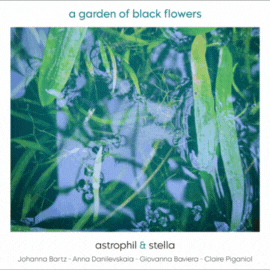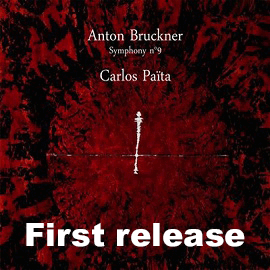 Frédéric Chopin: Klaviersonate Nr. 3 h-Moll, op. 58 + Nocturne Nr. 17 & 18 op. 62/1&2; Franz Liszt: Unstern! - Sinistre, S. 208 + Klaviersonate h-Moll, S.178; Josep Colom, Klavier; 1 SACD Eudora Records 2002; Aufnahme 03/2018, Veröffentlichung 22/05/2020 (82'30) - Rezension von Remy Franck
Frédéric Chopin: Klaviersonate Nr. 3 h-Moll, op. 58 + Nocturne Nr. 17 & 18 op. 62/1&2; Franz Liszt: Unstern! - Sinistre, S. 208 + Klaviersonate h-Moll, S.178; Josep Colom, Klavier; 1 SACD Eudora Records 2002; Aufnahme 03/2018, Veröffentlichung 22/05/2020 (82'30) - Rezension von Remy Franck
Der 73-jährige spanische Pianist Josep Colom hat den Mikrophonen seine gereifte Sicht auf die beiden h-Moll-Sonaten von Chopin und Liszt anvertraut. Das Ergebnis ist erstaunlich und beachtenswert.
Die Dritte Sonate von Chopin erklingt in einer überaus klaren Interpretation, die zwischen herb und gefühlvoll lyrisch, zwischen zupackend dynamisch und sehr nachdenklich wechselt und ihre Kohärenz aus dem Spiel der Kontraste (und der immensen Farbpalette) gewinnt. Es ist eine sehr persönliche und zugleich aus ihrem inneren Zusammenhalt heraus ungemein spannend wirkende Interpretation. Nichts wirkt aufgesetzt, nicht recherchiert in einem musikalischen Fluss, dem der Zuhörer gebannt verfolgt. Das sind schon mal 28 bereichernde Minuten.
Nach dem kühlen Charme der Chopin-Nocturnes wird das stockend beginnende, dann bedrohlich kräftig-rhythmische ‘Unstern! Sinistre’ von Franz Liszt im weiteren Verlauf immer sinister. Gegenüber Colom wirken Pollini und Brendel in dieser Komposition wie Chorknaben. Aus diesem Brodeln entwickelt sich die Stimmung der h-Moll-Sonate nahtlos und fast hoffnungslos, ehe Colom die Musik schroff herausfahren lässt, mit rhetorischen und bedeutungsvollen Pausen, ehe er sie schließlich infernalisch antreibt. Die virtuosen Passagen wechseln sich ab mit Momenten vollkommener Ruhe. Und am Ende sind wir wieder in der Stimmung von Unstern, zuerst noch sinister, dann mit einem klitzekleinen Hoffnungsfunken.
Diese Einspielung ist ein prächtiges Beispiel für die Fusion zwischen dem Komponisten und seinem Interpreten. Franz Liszt war bekannt für seine unnachahmlichen Konzertabende und für die Emotionen, die er bei seinen Zuhörern auslöste. Colom entführt uns in eine solch packende Klangwelt. Nur wenigen Künstlern gelingt es, diese Authentizität zu bewahren. Und es zeigt, weshalb Colom bei allen, denen sein Name geläufig ist, ein derart hoch angesehener Musiker ist, Lehrer übrigens vieler etablierter Talente, unter ihnen Javier Perianes.
Die Tonaufnahme ist von bestechender Klarheit, das Klavier klingt in allen Lagen gut und wurde ideal räumlich von den Mikrophonen eingefangen, was ein gutes Hörerlebnis sowohl in Stereo wie auch in einem diskreten, aber förderlichen Surround-Klang garantiert.
73-year-old Spanish pianist Josep Colom has confided his mature view of the two B minor sonatas by Chopin and Liszt to the microphones. The result is astonishing and remarkable.
The Third Sonata by Chopin is heard in an extremely clear performance, alternating between rough passages and soulful lyricism, between gripping dynamism and thoughtfulness, and derives its coherence from these contrasts and the immense palette of colours. It is a very personal interpretation, and at the same time, from its inner coherence, it is immensely exciting. Nothing seems artificial, nothing is researched in a musical flow that the listener follows spellbound. That is 28 enriching minutes.
After the cool charm of the Chopin Nocturnes and the hesitating beginning of Liszt’s Unstern! Sinistre, this work becomes threateningly strong and rhythmic and then more and more sinister. Compared to Colom, Pollini and Brendel play like choirboys in this composition. The mood of the B minor Sonata develops seamlessly and almost hopelessly from this seething atmosphere, before Colom lets the music brusquely burst out, with rhetorical and meaningful pauses, before he finally has it infernally driven. The virtuoso passages alternate with moments of complete calm. And at the end we are again in the mood of Unstern, at first more sinister, then with a tiny spark of hope.
This recording is a splendid example of the fusion between the composer and his interpreter. Franz Liszt was known for his inimitable concert evenings and for the emotions he aroused in his audience. Colom takes us into such a gripping atmosphere. Only a few artists succeed in preserving this authenticity. And it shows why Colom is such a highly regarded musician by all those who are aware of his name.
The sound recording is of captivating clarity, the piano sounds good in all registers and has been ideally captured by the microphones, guaranteeing a good listening experience both in stereo and in a discreet but beneficial surround sound.

























